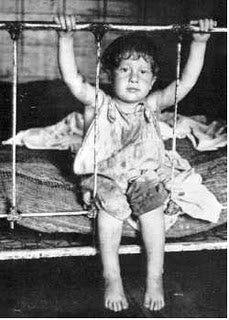 Attending the lecture from Baldwin Lee, Walker Evans's assistant, gave me a much greater insight to the Walker Evans exhibit being show in the Foster Gallery than did my walking through and looking at the photos alone. Baldwin spoke a lot about Evans's technique for photographing and what he was trying to achieve with his photos.
Attending the lecture from Baldwin Lee, Walker Evans's assistant, gave me a much greater insight to the Walker Evans exhibit being show in the Foster Gallery than did my walking through and looking at the photos alone. Baldwin spoke a lot about Evans's technique for photographing and what he was trying to achieve with his photos.I found it very interesting that Evans, like many other photographers, posed the people in his photographs. Though they look organic, the positions of the people in Evans's photographs are entirely deliberate. A certain look is achieved with each photograph, such as the two photos Baldwin Lee showed of the same woman with a slightly different facial expression. Walker Evans was trying to invoke a certain emotional reaction with his photographs and did so by posing people certain ways and using different lighting.
One portrait that really caught my eye was the one of the child sitting with his legs over the edge of a bed (shown above). I felt like I was looking straight into his heart through the outstanding detail in his face. Baldwin said that every photograph tells a story and Evans's are often 'not a simple description' of what they portray. This child was much more interesting to me than many of the other portraits shown in the exhibit because he seemed much simpler than the rest.
Another thing I found interesting was the fact that Evans knew how to work with people to achieve the portraits he wanted, like he did with the working man who was always in the middle of a large group of his friends. Baldwin said that Evans knew how to make himself seem like someone his subjects could trust, which was how he got many of the portraits. Even so, I found it espesically interesting that Evans never went back to meet any of the ancestors of the people he photographed or gave them the book Let Us Now Praise Famous Men, in which they were featured.
Baldwin Lee's presentation told us that Evans 'worked rather blindly'. Baldwin Lee talked about how artists sometimes don't know what they're looking for until they start working on a project. The project will then evolve into what they didn't even know they were trying to do. This was portrayed by the photos Walker Evans took of the ornate architecture from up above that ended up being a photograph of the city street. I liked that even someone as highly regarded as Walker Evans could take photographs that he didn't like and end up with a beautiful composition of something completely different because of it.
I think Evans's photographs are good portrayals of hard times in America. They will, of course, mean different things to different people, but I think the ambience of hardship and poverty are portrayed throughout the exhibit. Baldwin Lee said, 'In taking pictures of things, Evans took pictures of ideas.' By making the subjects of his photographs look a certain way and choosing which objects to show in the scenes, Evans urges people to see what he saw when he looked at these people and places. Even so, many people will interpret his photographs in all different ways. Like he said, 'looking is harder than it looks.'
sources:
Baldwin Lee Lecture. Foster Gallery. 12 November 2010.
-Ashly Curtis
No comments:
Post a Comment